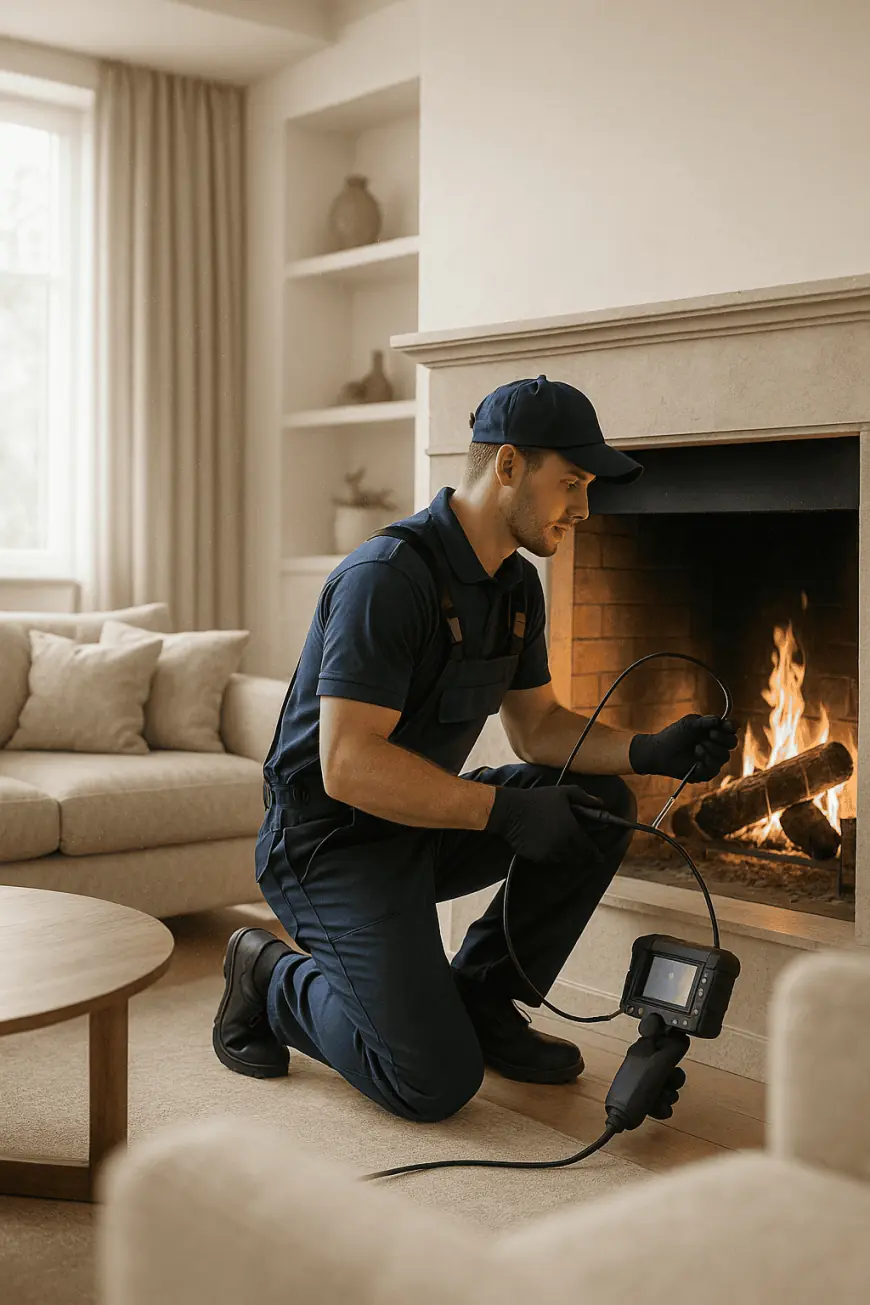When Should You Replace Your Chimney Liner in Tucson? Expert Timing Tips
Ensure home safety with timely Chimney Liner in Tucson replacement. Prevent fire risks, improve efficiency, and stay code-compliant.

Why It Matters
A functional chimney liner is critical for safely venting harmful gases, preventing fire risks, and maintaining structural integrity. Over time, exposure to intense heat, moisture, and corrosive byproducts can deteriorate the liner, leading to hazardous conditions inside your home. In Tucson’s unique climate, extreme temperature shifts and desert dust can accelerate liner wear, making timely replacement essential for safety and efficiency. Homeowners should be proactive and monitor their chimney liner in Tucson to prevent unexpected breakdowns and costly repairs.
Common Problems
Several issues indicate that your chimney liner may be compromised. Cracks, spalling, or gaps in the liner’s material can allow toxic gases like carbon monoxide to seep into living spaces. Visible debris in the fireplace, unusual odors, or excessive soot buildup are warning signs of liner deterioration. In some cases, moisture invading the liner can cause rust, corrosion, and masonry damage. Neglecting these symptoms can escalate to chimney fires or expensive structural repairs, underscoring the importance of periodic inspections and timely replacement.
Key Benefits
Replacing a faulty chimney liner delivers multiple advantages. First, it acts as a crucial safety barrier, preventing dangerous gases from entering your home. A new liner also enhances heating efficiency by improving draft and reducing energy waste. Additionally, a modern liner protects masonry from corrosive byproducts, extending the chimney’s lifespan. Homeowners may also benefit from increased property value and compliance with local building codes. Proactive replacement ensures peace of mind, knowing your fireplace and heating systems are operating at optimal safety standards.
Cost Breakdown
Understanding the costs involved in replacing a chimney liner aids in planning and budgeting. Pricing can vary depending on the liner material, chimney height, and the extent of required repairs. The following table outlines common cost considerations for homeowners in Tucson:
|
Chimney Liner Type |
Average Installed Cost |
Expected Lifespan |
|
Stainless Steel |
PKR 2,000 – 3,500 |
15 – 25 years |
|
Ceramic / Cast-in-Place |
PKR 3,000 – 5,000 |
20 – 50 years |
|
Clay Tile |
PKR 1,500 – 2,500 |
20 – 50 years |
Pricing is for informational purposes only and may vary based on site conditions, labor rates, and material selection. Always request a detailed estimate from a certified chimney professional.
The Role of Chimney Liner in Tucson
The chimney liner is the unsung hero of your chimney system, playing a pivotal role in maintaining household safety and performance.
“Chimney liners are the first line of defense against fire hazards and carbon monoxide poisoning. Regular assessment and replacement are vital, especially in regions with harsh weather fluctuations like Tucson.”
— National Fire Protection Association
A well-maintained liner shields your home from heat transfer to combustible materials, reduces the risk of flue fires, and supports proper venting. In Tucson’s arid environment, the liner also helps counteract the effects of dust and sand that can erode masonry and metal components.
Key Features
Modern chimney liners are engineered for resilience and performance. Stainless steel liners are favored for their corrosion resistance and adaptability across different fuel types. Cast-in-place liners offer seamless protection, conforming to irregular flue shapes for enhanced insulation. Clay tile liners, while traditional, remain effective in many masonry chimneys but require precise installation to prevent cracking. Key features to seek include UL listings for safety, lifetime warranties, and compatibility with your specific heating appliance. For households focused on comprehensive home safety, consider pairing liner replacement with essential maintenance tasks such as Dryer Duct Cleaning to mitigate fire risks throughout the property.
Safety
Safety is the primary driver for timely chimney liner replacement. Damaged or missing liners can allow heat and combustion byproducts to escape, increasing the risk of chimney fires and toxic gas intrusion. Regular inspection by a certified technician is recommended at least once a year, especially before peak fireplace usage in colder months. Homeowners should watch for visible wear, unusual smoke patterns, or unexplained odors, and take immediate action if any warning signs appear. Adhering to safety standards not only protects your family but also ensures compliance with insurance and municipal regulations.
Emergency Services
In the event of sudden liner failure, professional emergency services can address immediate hazards and prevent further damage. Signs warranting urgent attention include visible flames in the flue, strong smoke odors, or sudden drops in heating efficiency. Expert technicians are equipped to assess the situation, recommend temporary solutions, and plan for permanent liner replacement. Emergency response minimizes downtime, safeguards property, and restores safe operation without delay.
FAQs
Q1: How often should a chimney liner be replaced?
A: Most liners last between 15 and 50 years, depending on the material and usage. Annual inspections help determine when replacement is necessary.
Q2: What are the signs my liner needs replacement?
A: Common indicators include cracks, rust, debris, odors, or difficulty maintaining a fire.
Q3: Can I install a new liner myself?
A: Professional installation is strongly recommended to ensure safety, code compliance, and eligibility for warranty protection.
Q4: Is liner replacement covered by homeowners insurance?
A: Some policies may cover chimney liner replacement if damage is due to a covered event. Review your policy or consult your agent for specifics.
Q5: Does replacing a liner improve energy efficiency?
A: Yes, a new liner supports optimal draft and combustion, reducing energy waste and improving heating performance.
Conclusion
Staying vigilant about the condition of your chimney liner is a fundamental aspect of home safety and value preservation in Tucson. Prompt replacement not only safeguards against fire and gas hazards but also ensures your heating system runs efficiently. By understanding the signs of wear, researching liner options, and scheduling annual inspections, homeowners can make informed decisions and maintain a secure living environment. Consult a certified specialist for guidance and timely service regarding your chimney liner in Tucson.
Read More: Tucson Chimney Sweep
What's Your Reaction?
 Like
0
Like
0
 Dislike
0
Dislike
0
 Love
0
Love
0
 Funny
0
Funny
0
 Angry
0
Angry
0
 Sad
0
Sad
0
 Wow
0
Wow
0

















































